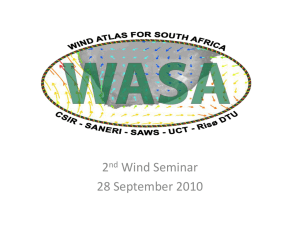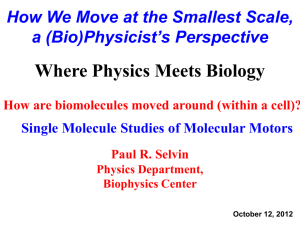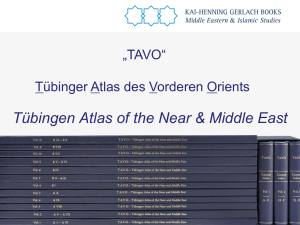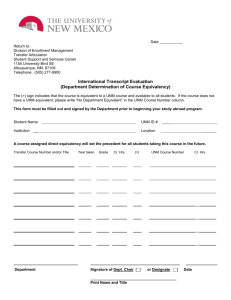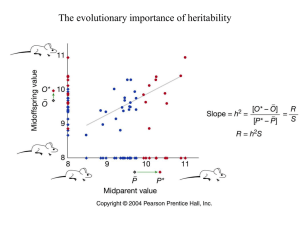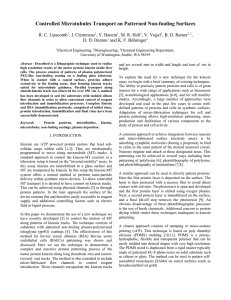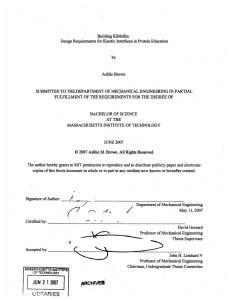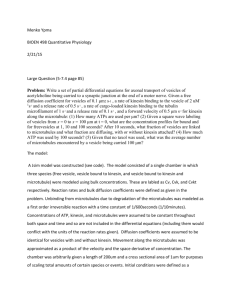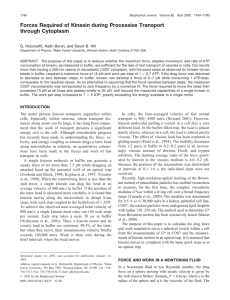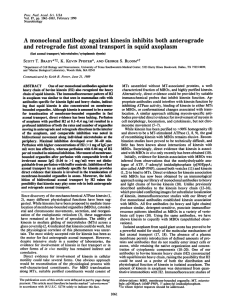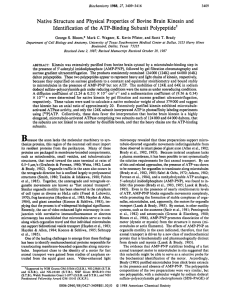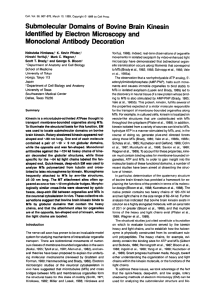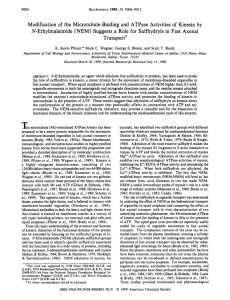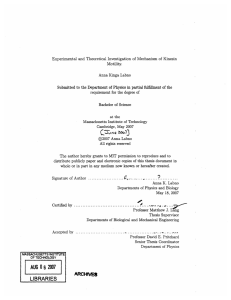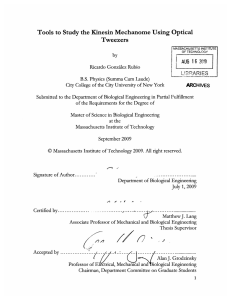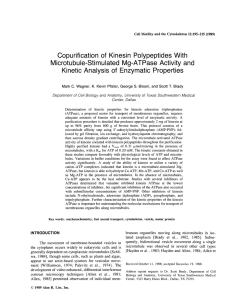TechApp Example 3 - Albuquerque High Performance Computing
advertisement
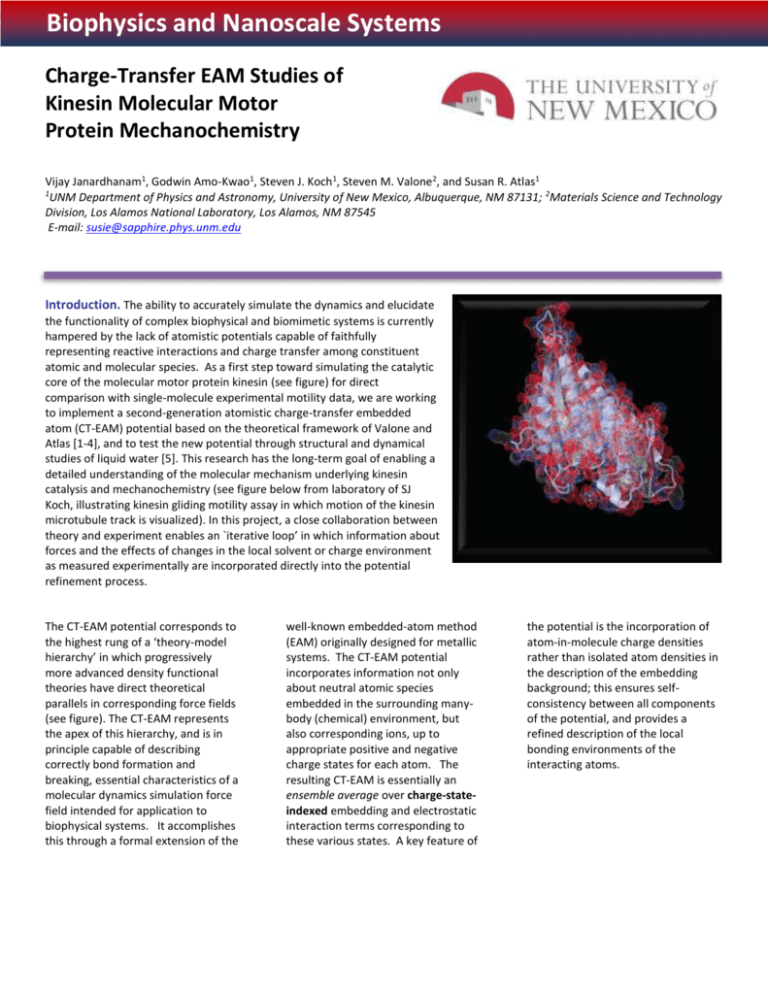
Biophysics and Nanoscale Systems Charge-Transfer EAM Studies of Kinesin Molecular Motor Protein Mechanochemistry Vijay Janardhanam1, Godwin Amo-Kwao1, Steven J. Koch1, Steven M. Valone2, and Susan R. Atlas1 1 UNM Department of Physics and Astronomy, University of New Mexico, Albuquerque, NM 87131; 2Materials Science and Technology Division, Los Alamos National Laboratory, Los Alamos, NM 87545 E-mail: susie@sapphire.phys.unm.edu Introduction. The ability to accurately simulate the dynamics and elucidate the functionality of complex biophysical and biomimetic systems is currently hampered by the lack of atomistic potentials capable of faithfully representing reactive interactions and charge transfer among constituent atomic and molecular species. As a first step toward simulating the catalytic core of the molecular motor protein kinesin (see figure) for direct comparison with single-molecule experimental motility data, we are working to implement a second-generation atomistic charge-transfer embedded atom (CT-EAM) potential based on the theoretical framework of Valone and Atlas [1-4], and to test the new potential through structural and dynamical studies of liquid water [5]. This research has the long-term goal of enabling a detailed understanding of the molecular mechanism underlying kinesin catalysis and mechanochemistry (see figure below from laboratory of SJ Koch, illustrating kinesin gliding motility assay in which motion of the kinesin microtubule track is visualized). In this project, a close collaboration between theory and experiment enables an `iterative loop’ in which information about forces and the effects of changes in the local solvent or charge environment as measured experimentally are incorporated directly into the potential refinement process. The CT-EAM potential corresponds to the highest rung of a ‘theory-model hierarchy’ in which progressively more advanced density functional theories have direct theoretical parallels in corresponding force fields (see figure). The CT-EAM represents the apex of this hierarchy, and is in principle capable of describing correctly bond formation and breaking, essential characteristics of a molecular dynamics simulation force field intended for application to biophysical systems. It accomplishes this through a formal extension of the well-known embedded-atom method (EAM) originally designed for metallic systems. The CT-EAM potential incorporates information not only about neutral atomic species embedded in the surrounding manybody (chemical) environment, but also corresponding ions, up to appropriate positive and negative charge states for each atom. The resulting CT-EAM is essentially an ensemble average over charge-stateindexed embedding and electrostatic interaction terms corresponding to these various states. A key feature of the potential is the incorporation of atom-in-molecule charge densities rather than isolated atom densities in the description of the embedding background; this ensures selfconsistency between all components of the potential, and provides a refined description of the local bonding environments of the interacting atoms. For the present application to studies of the structures of water clusters and the simulation of liquid water dynamical properties, the CT-EAM parameterization is based on a database of high-quality first-principles electronic structure calculations performed for key configurational and charge states of the water monomer and dimer-based clusters, and component pseudo-atom (atom-in-molecule) electron density distributions. Structural studies performed with this firstgeneration form of the CT-EAM potential reveal remarkable agreement with theoretical quantum chemistry (UHF) predictions for the incremental binding energies of water clusters up to n=20 (see figure) and correlated predictions (not shown). The second-generation CT-EAM water potential under development will incorporate a significantly more detailed description of the atom-in-molecule charge density distributions for the charged atomic species comprising the building blocks of the CT-EAM potential, and will be tested in simulations of dynamical water properties for comparison with fixed-charge force fields such as the TIP and SPC models, and fluctuating charge models based on an assumption of quadratic dependence of the energy on charge, known to fail in the dissociation limit. References [1] Density Functional Theory of the Embedded-Atom Method: Multiscale Dynamical Potentials with Charge Transfer, SR Atlas and SM Valone, to be submitted; arXiv:cond-mat (2009). [2] SM Valone and SR Atlas, Phys. Rev. Lett. 97, 256402 (2006). [3] SM Valone and SR Atlas, Phil. Mag. 86, 2683 (2006). [4] SM Valone and SR Atlas, J. Chem. Phys. 120, 7262 (2004). [5] Environment Dependent charge potential for water, arXiv:condmat/0705.0857v1, K Muralidharan, SM Valone, and SR Atlas (2007). Acknowledgements This work is supported by the DoD DTRA CB Basic Research Program under Grant No. HDTRA1-09-1-008; early theoretical development of the CT-EAM and its density functional foundations was supported by NSF grants CHE-0304710 (SRA/SMV) and DMR-9520371 (SRA). The work of SMV was performed at Los Alamos National Laboratory under the auspices of the U.S. Department of Energy, under contract No. DE-AC52-06NA25396. We are grateful to the UNM Center for Advanced Research Computing for providing the computational resources used in this work.
